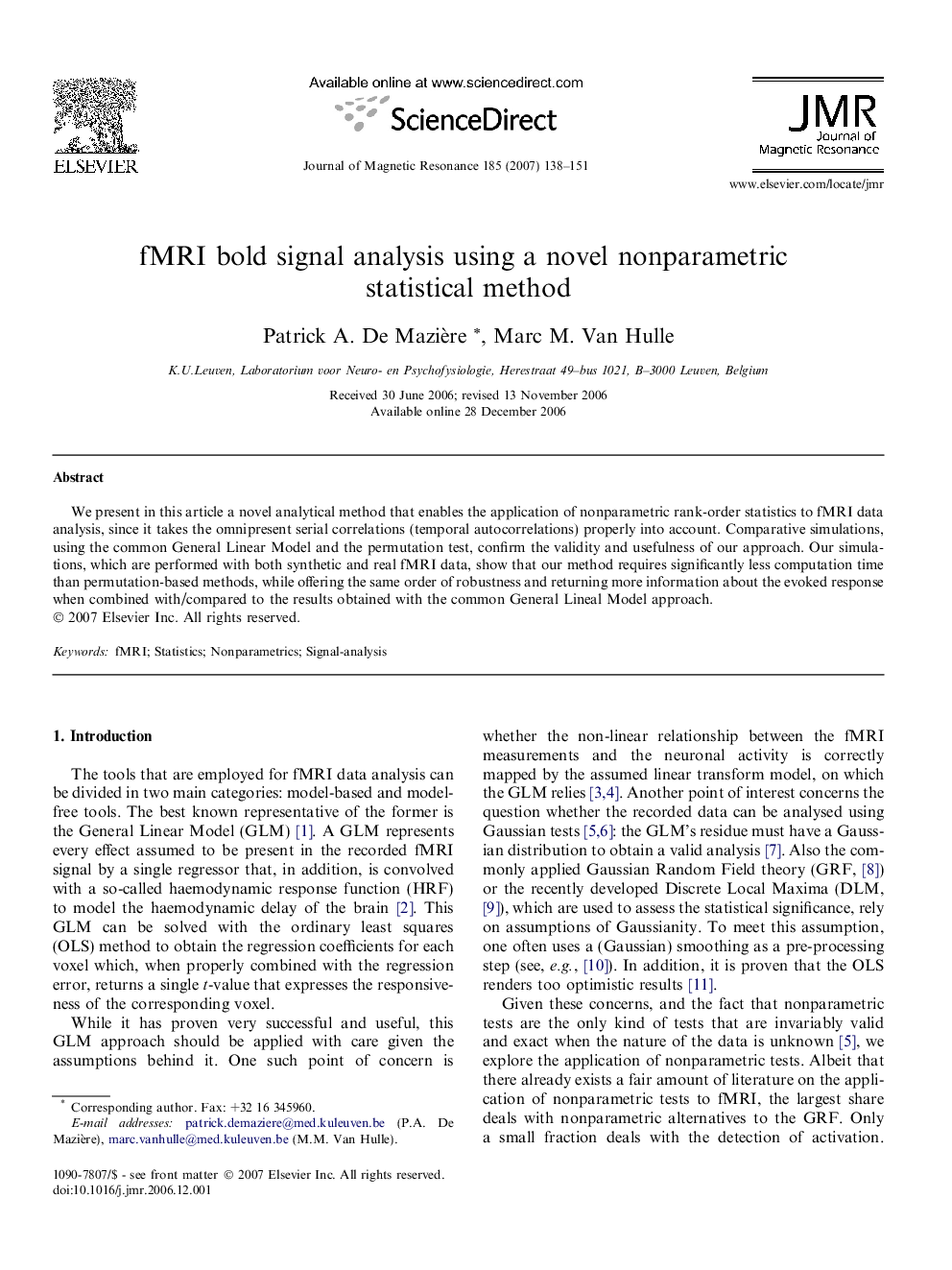| Article ID | Journal | Published Year | Pages | File Type |
|---|---|---|---|---|
| 5407433 | Journal of Magnetic Resonance | 2007 | 14 Pages |
Abstract
We present in this article a novel analytical method that enables the application of nonparametric rank-order statistics to fMRI data analysis, since it takes the omnipresent serial correlations (temporal autocorrelations) properly into account. Comparative simulations, using the common General Linear Model and the permutation test, confirm the validity and usefulness of our approach. Our simulations, which are performed with both synthetic and real fMRI data, show that our method requires significantly less computation time than permutation-based methods, while offering the same order of robustness and returning more information about the evoked response when combined with/compared to the results obtained with the common General Lineal Model approach.
Keywords
Related Topics
Physical Sciences and Engineering
Chemistry
Physical and Theoretical Chemistry
Authors
Patrick A. De Mazière, Marc M. Van Hulle,
